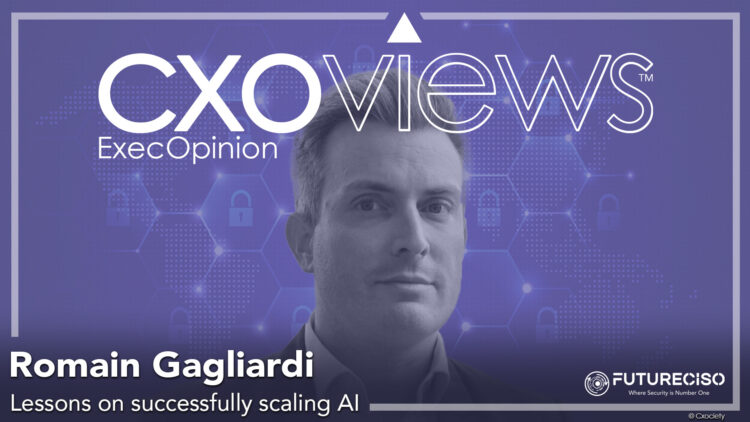There is a growing interest among business leaders in the Asia Pacific region. According to the International Monetary Fund (IMF), the area has experienced rapid growth and development over the last three decades, primarily due to structural transformation, where workers have shifted from agriculture to other sectors, such as manufacturing and services.
"Ensuring a shift towards more productive services will require investment in education and training to supply needed skills, including to help workers adapt to the wave of new technologies, including Artificial Intelligence," stated an IMF report.
This transformation is no longer just about moving from agriculture to manufacturing. It is now about embracing digital innovation where AI is playing a pivotal role.

Romain Gagliardi, managing director for Singapore at Wavestone, sees this trend reflected in regional government initiatives. More than being a traditional manufacturing hub, Asia is now actively building itself into a digital innovation powerhouse.
For instance, the Taiwanese government is actively promoting and nurturing digital innovations. Similarly, Singapore's government is leading the way in cybersecurity and artificial intelligence initiatives.
"There are similar initiatives where in a different market, such as Malaysia, Indonesia, where all international investment companies are pushing to create some data centres with a massive investment in GB in Kuala Lumpur, in Jakarta, to create similar hubs across APAC," he said.
C-suite expectations around AI
As interest in AI deepens, particularly among C-suite executives, expectations are evolving. Gagliardi acknowledges that while expectations can be ambitious, they are not entirely unrealistic.
"CXOs in Asia are increasingly aware that AI is not a silver bullet, but a strategic enabler. The most mature organisations are focusing on high impact and are narrowing down different use cases," he said.
With these grounded expectations of AI, this means starting with targeted experimentation. Leaders identify specific use cases, build a business case, and test their viability before scaling them up.
"I stop it. I observe, assess, and is it conclusive or not? If it's conclusive, then I would like to scale to create more revenue," he explained.
He emphasised that another aspect entails investing in foundational capabilities, such as data governance and AI governance frameworks, to consistently support and drive various initiatives, thereby enabling the same assessment and benefits.
"It's like your AI factory or use cases factory, where you can promote and accelerate in the same framework. And then finally, I think that the CxOs need to realign business processes to reintegrate or integrate AI into their workforce; and not just as a tool, but on a transformation level," he said.
He observed that large MNCs are embedding AI into revenue-generating and cost-saving areas, such as supply chain management and fraud detection. But some companies still treat AI as isolated tech experiments with poor linkage to business goals.
"On the broader scale, the market is a bit testing some opportunities. There is a lack of alignment between what the market can propose and what the potential client needs, in the sense that you have many, many companies are now trying to push Agent AI solutions on the shelf, but not tailored to the legacy of a company to regulations and to like real specificities of an industry of the country," he said.
Building a scalable AI strategy
To build a scalable AI strategy, the Wavestone executive advises leaders totailor their approach toward one to three specific use cases to define a proper business case that matters from a business standpoint, either in terms of cost optimisation or revenue creation.
He said it should begin with a value proposition. Then, after creating the business case, leaders can build a proper, detailed architecture to detail what they want AI to accomplish. Afterwards, leaders can collaborate with the IT team or the direct vendor to test what they envision in terms of this case.
"After six to 8 weeks, we do a retrospective. Did it work? Did it bring the expected value? And then, if yes, then how can I scale?"
Despite the optimism in scaling AI initiatives, he observed three primary issues in organisations' ability to scale.
"The first one is linked to the fragmented data infrastructure. When working in a large company, there is always a mess.
Many databases serve as warehouses, etc., and having a single source of truth is very rare in such organisations. You need to find a way to work with this legacy ecosystem," Gagliardi explained.
Regarding the data infrastructure, leaders should also focus on maintaining clean data to prevent a 'garbage-in, garbage-out' effect. If my data is not good, then I will not have a good impact in the end.
Next, he observed that talent scarcity is a primary concern, especially in Singapore, where there is a shortage of AI engineers, data scientists, and ML OPS professionals. In a study by Manpower Singapore this year, 83% of employers reported difficulty finding the skilled talent they need, up from 79% in 2024 and more than doubling from 41% in 2019.
"That part is something that the university has a big role to play, but also multi-national companies (MNCs) to re-skill or upskill their current talent," he said.
Third, governance and risk management are significant concerns for many companies when scaling their AI initiatives.
"So many companies and many CIOs' offices like a robust framework for AI ethics, model explainability, regulatory compliance and especially in the Asia market, it is a fragmented market with different countries with multiple regulations, going everywhere and so on,” Gagliardi added.
Organisational changes
Scaling AI also demands organisational change. Gagliardi believes that AI transformation must be led from the top, depending on the company's size and sector. In many cases, this includes new leadership roles.
"To foster an AI-ready culture, leaders in the organisation must create new roles, or at least ensure that someone embraces the job description. We need to have a Chief AI officer who will lead the transformation in collaboration with someone higher up in the organisation," he said.
"We need to have AI product managers because at the end of the day, AI is also a product to be considered to bring money, either for cash generation or cash optimisation. The CSR role needs to be created. Responsible AI leads," he added.
He also emphasised the importance of upskilling in creating a culture ready to scale AI. He believes companies should launch AI literacy programs for all employees, including both tech teams and business teams.
To centralise best practices, tools and governance, and these AI centres of excellence can be like a reference for other employees instead of someone unique. Romain Gagliardi
"Finally, in my opinion, they need to establish AI centres of excellence. To centralise best practices, tools and governance, and these AI centres of excellence can be like a reference for other employees instead of someone unique. So it is easier to spread across the culture, techniques and skills across the organisation," he said.
The future of AI in Asia
Looking ahead, Gagliardi sees continued momentum for AI adoption across the Asia Pacific region, fueled by strong government backing.
"I feel there will still be a big push in the years to come, with large investments supported by governments," he said.
However, he also warned of regulatory hurdles, especially in sectors such as banking and pharmaceuticals.
Ultimately, the road to scaling AI successfully in Asia requires experimentation, governance, collaboration, and upskilling.
For enterprises ready to commit, the opportunity is massive, but so is the responsibility.





